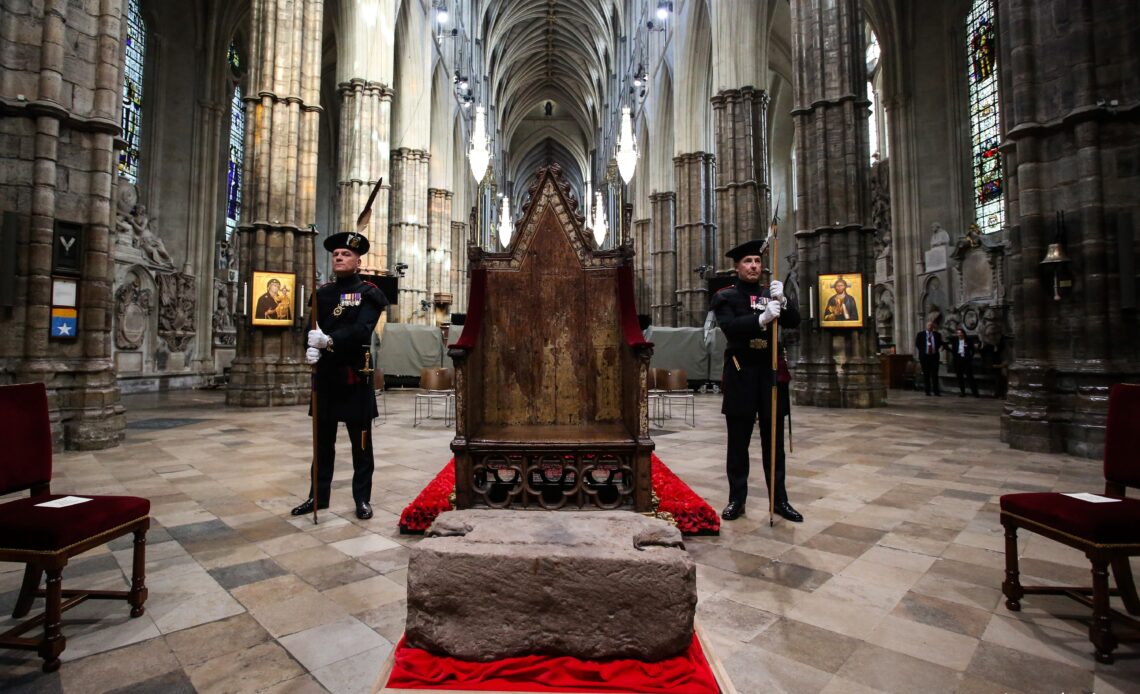
Royal Christmas traditions have evolved through the centuries. Some are based in ancient history, others are ones that the family would create over time. Some are no longer and some have evolved into what we know a royal Christmas to be today.
In the 1800s, the then-Princess Victoria enjoyed many Christmases at Kensington Palace. Christmas Eve 1832, the future monarch wrote in her journal how the dining room was decorated for Christmas Day.
‘”There were two large round tables on which were placed two trees hung with and sugar ornaments. All the presents being placed around the tree.”
The celebrations in 1850 would be overshadowed by the theft of one of the most iconic parts of a coronation service, the Stone of Scone. In 1296, King Edward I deposed the Scottish King, John Balliol, and had the stone removed from Scotland. It was taken to Westminster Abbey where it was placed below the Coronation Chair. It remained there until Christmas Day in 1950 when it mysteriously vanished. A year later, the stone appeared at the high altar of Arbroath Abbey in Scotland. On St Andrew’s Day in 1996, the stone was placed at Edinburgh Castle where it remains to this day.
Embed from Getty ImagesThe stone, also known as the Stone of Destiny is an oblong block of red sandstone originally used in the coronation of Scottish monarchs. After the 13th century, it would be used in the coronation of monarchs of England, Great Britain, and the United Kingdom. Of most recent, the 150kg stone was used in the coronation of King Charles III.
Embed from Getty ImagesWhile Queen Charlotte first introduced the Christmas tree to Britain in the 18th century, the fir tree we know today can be traced back to Prince Albert in the 1840s. The trend became popular after several images of Queen Victoria and her family around a tree became public. Soon, trees across the country decorated homes for the holidays. What’s a Christmas without a gift? In 1881, Queen Victoria gave a fan decorated with festive holly berries and leaves to her daughter-in-law, Alexandra, Princess of Wales (later Queen Alexandra.)
Queen Mary’s Dolls House even got in on Christmas traditions and decor. The house was designed and built between 1921 and 1924 as a gift from the nation. The house, built on a scale of 1 inch to 1 foot has working parts (including the plumbing!) as well as items made by the leading companies of the times. In 1924, a 5cm high edition of Charles Dickens’s ‘A Christmas Carol’ was placed in the house library which has books written by 170 different authors.
Around the same time, the tradition of a royal Christmas card began. The first card was sent out in 1923 after the penny post was introduced. Some of the cards sent during this time include the Duke and Duchess of York (the future King George VI and Queen Elizabeth, The Queen Mother) and their then-three-year-old daughter, Princess Elizabeth of York (Queen Elizabeth II.)
Embed from Getty ImagesAs technology and broadcasting developed, George V would be the royal to give the first Christmas broadcast in 1932. While he had reigned since 1910, it wasn’t until this time that he delivered his first Christmas message. Since then, the message has evolved into an important part of Christmas Day celebrations in Britain and across the world. Christmas became extra special for the late Duke and Duchess of Kent as Princess Alexandra, Queen Elizabeth II’s cousin was born on Christmas Day in 1936.
Embed from Getty ImagesDuring World War II, Princesses Elizabeth and Margaret hosted their own pantomimes as they lived at The Royal Lodge at Windsor Castle. The traditional festive performances included evacuees, local children, friends, and service personnel based in the Windsor area. Money from the performances was given to the Wool Fund which helped bring would to the country to be made into military clothing.

